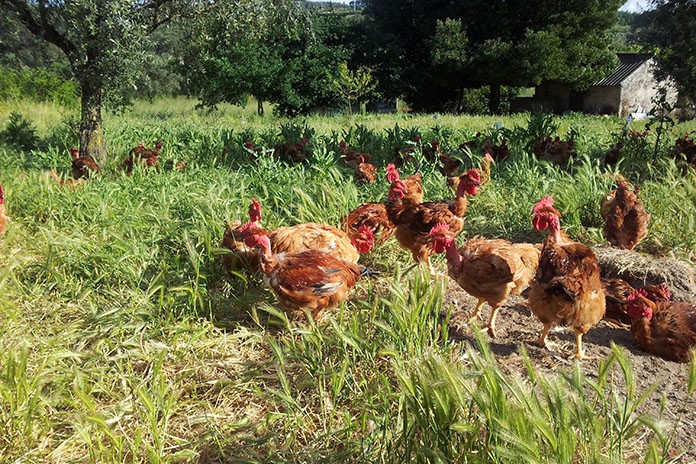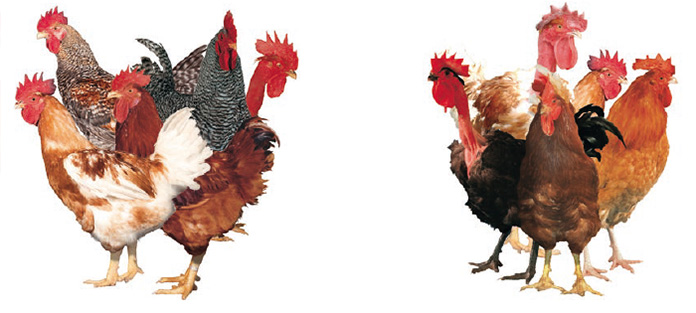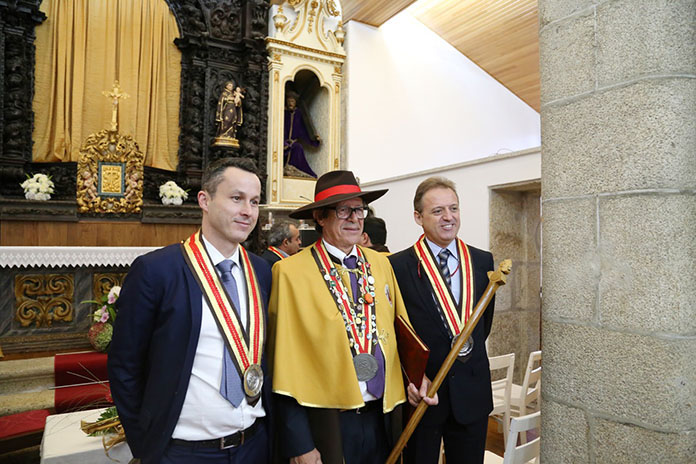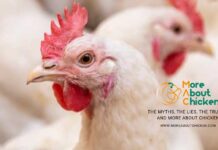
Besides recent developments seen in the highly developed countries with slower growing (white) chickens grown up to about 7 weeks of age – filling the gap between conventional broilers and the slow growing chickens – there are several traditional markets looking for a nicely coloured real slow growing chicken.
Background
These traditional markets can be found all over the world and could be classified as ‘rural’ poultry. Rural poultry is highly diverse in nature and varies according to the country: back yard farming, young reared chickens sold alive directly or at markets, (organic) free range chickens, dual purpose, etc. These chickens are either sold with or without a national or private quality certification.
In Asia and Latin America traditionally almost each country has its own native chicken to produce meat (and eggs) fulfilling the specific requirements of the local market. In the USA such markets also exist for the ethnic markets serving the growing Latino or Chinese population.
In Europe this kind of chicken growing often relates back to local demand mainly based on tradition and ‘cuisine’. Where in Northern Europe traditional markets gradually had been replaced by fast growing chickens, the more southern and Eastern countries always have maintained this production. They can be found in France, Portugal, Spain, Italy, Greece, Hungary, Romania, Ukraine, etc.
Each country our even each region in one country has a specific traditional product: the colour is different (red, black, Sussex type, grey, feathered or naked neck, genetic yellow, white or black skin and shanks); the final weight is different; the way they are grown is different. Besides colour also robustness, specific slow growth patterns, adaptation to free range and quality of meat are important criteria for producing a traditional type of chicken.

Market types
Backyard farming is not based on any official certification. The products are sold directly to consumers (on local markets) by local poultry farmers who grow their broilers in natural settings. Sometimes they are also used for dual purpose (females for eggs and the males for meat production). Because of the HPAI risks this kind of markets are under pressure to be distinct. On the other hand we can see some increase of this kind of production because of its focus on tradition and also in times of economic crises. Most of these markets are seasonal; chick sales normally start after the wintertime to grow them during the period from spring to autumn.
Organic chicken production falls under a separate EU regulation. At this moment these regulations are about to be changed, but the main problem is that the final rules differ a lot between countries or certifications. This makes it difficult to compare production systems between countries. Therefore the EU is now trying to harmonise the organic rules for all member states, but this will still be a long and ongoing process. In countries outside the EU the definition of organic is often totally different and much less strict.
However, organic is relative small in chicken production and no major growth can be seen due to high production costs and difficulty to get enough organic ingredients for feed production. The governments in the Scandinavian countries like to promote this kind of chicken, like they do for table eggs.
The well-known Label Rouge concept from France, which started in 1961, later on has more or less been copied in the ‘EU Directive for Special Marketing Terms’ with its Traditional Free Range chicken, which mainly can be found in the UK and Southern Europe. Traditional Free Range Farmers either use movable houses or fixed houses with maximum 4,800 chickens per pen. The chickens are grown at a minimum age of 81 days with access to a ranging area of at least 2m2 per chicken latest as from 6 weeks of age.

Genetics
All these different markets require a wide range of breeder females and males to choose from as the genetics used need to fit the specific needs for each final product. That is exactly what rural producers can find in the large Hubbard Premium genepool.
For the last 50 years Hubbard has always been a traditional and trustful supplier for this kind of market combining history, experience and a wide choice of products with good performances and high quality products.
The Hubbard Premium breeds are selected with the modern tools which are available within the Hubbard breeding program and with clear focus on tradition, taste, quality, animal welfare and natural behaviour.

















